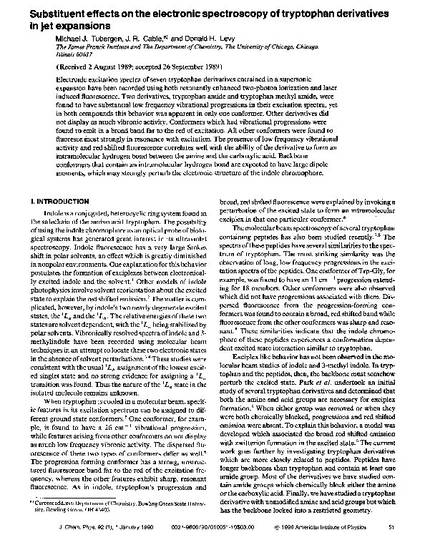
Electronic excitation spectra of seven tryptophan derivatives entrained in a supersonic expansion have been recorded using both resonantly enhanced two-photon ionization and laser induced fluorescence. Two derivatives, tryptophan amide and tryptophan methyl amide, were found to have substantial low frequency vibrational progressions in their excitation spectra, yet in both compounds this behavior was apparent in only one conformer. Other derivatives did not display as much vibronic activity. Conformers which had vibrational progressions were found to emit in a broad band far to the red of excitation. All other conformers were found to fluoresce most strongly in resonance with excitation. The presence of low frequency vibrational activity and red shifted fluorescence correlates well with the ability of the derivative to form an intramolecular hydrogen bond between the amine and the carboxylic acid. Backbone conformers that contain an intramolecular hydrogen bond are expected to have large dipole moments, which may strongly perturb the electronic structure of the indole chromophore. © 1990 American Institute of Physics.
Available at: http://works.bepress.com/john_cable/1/
